Explore
1. Introduction
In collaboration with industry experts, we have put together the following guidance on profession-specific and more generic actions and measures that workplace and facilities management professionals should consider during and after the coronavirus pandemic. This guidance does not provide detailed technical information, but rather takes a principled approach - with signposting to other authoritative guidance - and aims to support individuals with varying levels of responsibility and experience in order to help them plan ahead.
We will continue to update this page with the latest advice and best practice guidelines as circumstances change. The most up to date UK Government guidance on coronavirus can be found here.
In December 2021 we carried out our latest research on workers’ attitudes to returning to the workplace. The key findings, full results and comments from our CEO, Linda Hausmanis, can be found here.
Expand to continue reading
Following continued falls in infection levels, hospitalisations and deaths due to the Omicron variant, on 21st February 2022 the Prime Minister announced the ending of all COVID-19 restrictions in England including the legal requirement for people with the virus to self-isolate. Rules are also expected to be relaxed - although not necessarily scrapped - in Scotland, Wales and Northern Ireland.The Government’s working safely guidance, which covers a wide range of workplace settings, has been updated accordingly.
Devolved administrations
While the principles of this guidance apply to the whole of the UK, the devolved administrations of Scotland, Wales and Northern Ireland have adopted differing approaches and measures in dealing with the pandemic. Those countries have issued specific guidelines which may vary from those of the UK Government in the following areas (please click on the link in each country name):
Workplace safety: Scotland, Wales, Northern Ireland
Social distancing and staying safe: Scotland, Wales, Northern Ireland
Coronavirus testing: Scotland, Wales, Northern Ireland
Support for business: Scotland, Wales, Northern Ireland
2. Planning the workplace: five guiding principles for FMs
Since the start of the pandemic, workplace and facilities managers have had to suddenly mothball buildings, maintain and prepare them for reoccupation, and help to create hybrid working environments governed by social distancing imperatives as organisations adjusted to a new set of operating norms.
This kind of workplace management programme requires professional leadership and presented a unique opportunity for FMs to take a leading role in creating and managing a new generation of workplaces - to ‘build back better’. In doing so, the profession was able to demonstrate the added value it offers, not just in bringing the space, culture and technology aspects of workplace together, but also in enabling people and businesses to work safely, flexibly, collaboratively and productively; providing maximum benefit to the individual, the organisation and wider society.
Expand to continue reading
The immediate and constant concern in such circumstances is to ensure business continuity and maintain service levels, in tandem with the shifting and evolving guidance on working from home, social distancing, etc. This may require several iterations over time, so flexibility and agility is key to workplace planning until any longer term ‘normality’ is established.
A. Workplace capacity – how many employee/occupants?
Firstly, the facilities lead should regularly refer to the latest government advice on working safely when carrying out health and safety risk assessments to determine the workspace capacity and how best to keep people safe - wherever and whenever work is carried out. This risk assessment should be done in consultation with workers or unions.
The Health and Safety Executive (HSE) provides excellent advice on risk assessments in the workplace here, with an example risk assessment for an office-based business here.
Employers have a legal responsibility to do everything reasonably practicable to minimise health and safety risks to their workers, while recognising that it is not possible to completely eliminate risk - including that of COVID-19. Consider also the capability, capacity and willingness of each individual to attend the workplace, including their commuting requirements, and the Government’s safer travel guidance.
The risk assessment is a key tool in understanding and identifying potential hazards in the workplace and in assessing the risk of them occurring, so that mitigation measures can be put in place. It will therefore help to define not just how many workers can be present, but how to manage this safely.
Social distancing requirements - such as those brought about by COVID-19 - may mean that the number who can occupy the workplace will remain reduced. To determine what the operational space is, you will have to consider not just the volume of space, but also factors such as access points and lifts, optimising flows and minimising bottlenecks and ventilation potential.
B. What is the workplace strategy? Who needs to be there and what does this mean for the space?
Once you know how many people you can accommodate, you need to consider who needs to be physically in the workplace and who does not. This will help to prioritise and organise the space into an attractive environment so that it can accommodate the right activities.
As during the coronavirus pandemic, you should consider the need for meeting rooms, the potential removal of desks, the addition of screens (transparent where possible to promote connectedness). Continuing the practice of ‘hot-desking’ will require regular thorough cleaning of the workstation area, but this may enable better social distancing and be more hygienic than allocating desks to individuals. Where possible, provide modular and flexible solutions so that people have different options to suit their needs and configurations can be adjusted to take account of varying levels of restrictions and occupancy.
In addition to planning the work space, based on an understanding of which activities need to take place and how it is best organised within the building fabric, you will also need to consider the needs of the many people, possibly a majority, who will want to continue to work remotely. They will need to be supported with their home workspaces so that they are conducive to long term productive working. Key considerations for home workers include how to support them with the right hardware, including chairs and IT, as well as navigating a new working dynamic, including breaks and concentration techniques.
Many workplace strategies will not settle for a binary choice of office or home working; rather they will provide additional options of remote working and ongoing flexibility about how and when the best, most productive work is done. Giving permission to individuals to choose how and when they work, as well as providing them with what they will need to do that, allows them to balance their work-life demands, minimising stress and anxiety, to the benefit of all.
Whatever measures or adjustments you put in place must: avoid putting workers with a physical or mental disability at a disadvantage, take account of your duties under equality legislation, and be mindful of the particular needs of any groups or individuals whose protected characteristics might expose them to different degrees of risk.
C. Essential engagement and communications with employees
The most effective workplace strategy will be informed by insight. Workplace and facilities managers need to understand concerns about likely workplace scenarios to best identify and accommodate an optimal balance between individual and organisational needs.
Engagement is a fundamental part of any workplace strategy and should include regular two-way communication and transparency to provide clarity and reassurance. The implementation of workplace guidelines and practical measures, such as cleaning and distancing regimes, will be foremost in people’s minds. Not everyone is going to want to return to the workplace and not everyone’s circumstances will allow home working either.
FMs should collaborate with HR colleagues to engage with employees to better understand their needs and concerns. Not only will this help to determine what to prioritise in your space management, but what you can do better to support people in making efficient homeworking spaces, while at the same time ensuring people’s wellbeing and connectedness. Good practice would see regular surveys, especially in larger organisations, to help keep track of teams, provide opportunities for staff to raise issues and compare different approaches.
Along with employee engagement, open and transparent communications about what the business is doing will be important to retain trust in the organisation - both internally and externally. In addition, the Government may expect every employer with over 50 workers to publish their workplace risk assessment on their website, as during the coronavirus pandemic. Furthermore, an ongoing review of best practice, alongside the engagement and communication, will demonstrate a commitment to creating a safe and healthy workplace.
If you manage a workplace in a building with multiple occupiers, you will also need to engage and coordinate with the different stakeholders so that everybody's health and safety is protected.
D. Building response to the new workplace strategy
Once you have determined what activities will continue to take place in the workplace, how many people will occupy the building and at what times - and you therefore have an understanding of your future building systems requirements - you will need to give careful consideration and plan the extent, scheduling and order of maintenance, cleaning and testing protocols.
Workplace and facilities managers will need to ensure ongoing compliance with health and safety to ensure the building is a genuinely safe and healthy workplace. The section Managing buildings and premises: prompts and actions below looks at a variety of areas to consider in the context of planned occupancy levels and the potential impacts of a pandemic.
When planning a return to an unoccupied building, at least three to four weeks - possibly longer for multi-occupied buildings - should be set aside for these procedures as the availability of suppliers for such checks might be limited by demand and other factors. If regular statutory maintenance or testing has not been carried whilst a building has been closed down, it must be carried out before the building is re-occupied as the HSE will expect full compliance before (re-)occupation.
In order to provide a space-based response to social distancing challenges, consider and review the following:
- capacity at entrances and exits, deactivating security barriers or turnstiles
- capacity in public areas such as receptions and canteens - do you need to increase the space allocated?
- safe distance markings, especially around lifts and other busy areas
- one-way traffic flows especially on staircases and corridors
- staggered working hours and arrival and departure routines (reduce capacity at entrances/exits, lifts, stairs)
- reducing hours premises are available to workers
- limiting the number of people each worker has contact with by reducing teams, or using fixed teams/partnering
- implementing back-to-back or side-to-side working (rather than face-to-face)
- replacing touchpoints with automatic and sensor operated tools, e.g. automatic or revolving doors instead of push doors, and sensor-operated lighting
- sensor technology to help schedule and monitor attendance, manage density and distance between workers, inform cleaning requirements, and support contact tracing
E. Staying flexible and leading the ongoing change programme
Facilities managers can demonstrate leadership in providing and implementing the solutions that workplaces need. While you are likely to already be working closely together with IT and HR to provide solutions, you will need to work with other key decision-makers such as communications and finance teams to enact your workplace strategy efficiently.
With many health experts predicting that the coronavirus will affect our lives for some time, we may only be in the first phase of a long transition to a ‘new normal’. It is therefore important to remain flexible and resilient in your planning so that you can adapt to rapidly changing circumstances. You should ensure solid business continuity plans remain up to date in case you have to manage a sudden return to homeworking in the event of future lockdowns.
Alongside this mid-term planning, you should start considering the long-term implications for your office space footprint alongside other workplace adaptations to help focus minds on the organisation’s strategic objectives. It is important that organisations do not revert to business as usual without taking on board learnings from how they managed the change.
Furthermore, there is a major opportunity to use this rethinking to return to a better workplace, offering greater flexibility and choice while working towards more ambitious sustainability goals. COVID-19 has taught us that sustainability has not disappeared off the agenda - if anything, quite the opposite: now is the time to make a difference.
3. Managing buildings and premises: prompts and actions
This section provides advice and guidance for when buildings are in full or partial use, covering fire safety, security, cyber security, hygiene and cleaning, utilities, business continuity and other practices which will help to ensure safety at work for employees, contractors and other building users.
Expand to continue reading
Fire safety
When planning fire safety testing routines, ensure that any flexible working arrangements allow for there to be employees on site who are competent to carry them out.
If your premises are closed to everyone, tests and checks are realistically suspended; if essential management or technician visits are required, adopt a dynamic risk assessment approach (check the perimeter before entry, check fire panels for operation/fault, check MOE for obstruction and final exit, ensure there is a phone signal to dial 999).
Actions to carry out:
- review Fire Risk Assessments in light of any risks incurred by new working locations or patterns, or changes of use
- review Personal Emergency Evacuation Plans (PEEPs) to reflect current staffing levels and working practices, paying particular attention to any vulnerable workers (the Government has recently consulting on PEEPs in high-rise residential buildings)
- review risks of measures such as keeping fire doors open to reduce contact with surfaces (note: fire doors should be kept closed unless they are held open by purpose-made automatic devices)
- encourage those working from home to check fire safety protocols and equipment (for example, test smoke alarms and unplug equipment when not in use).
The National Fire Chiefs Council has published guidance on competent fire safety risk assessment with additional guidance for businesses on COVID-19-related safety. For specific questions not covered by the advice, you can contact your local FRS or primary authority in the first instance. If this is unsuccessful, you can email the NFCC team at: [email protected]
The London Fire Brigade also has this advice on fire prevention, protection and safety, both in the home and the workplace.
Security
Tasks to maintain and review include:
- risk assessing access to and movement around the building: if you have introduced separate building entry and exit points, do they have adequate security/monitoring?
- part-occupied or empty premises may present a more attractive target for crime: check for signs of unusual activity/damage/vandalism around the building/perimeter, check outdoor spaces and outbuildings for unauthorised occupation, check all exterior doors and accessible windows, review access to all vertical transportation units/cradles
- consider how to best protect reception staff, use transparent screening or signage (floor markings, guidance ropes, and so on) for appropriate distancing
- ensuring appropriate health and safety procedures and protections are in place including for lone working or personnel/contractors who need building access, monitor procedures for logging occupants/visitors and for contact tracing
- ensure adequate protection for security personnel who are amongst the occupations most exposed to the risk of viruses and other health dangers (and with the highest mortality rate, according to ONS figures). ASIS have published this guidance and resources for security professionals
- mixed-use properties: do any occupants/residents, especially those who are vulnerable or have special needs, require special access and protection?
- Police Crime Prevention advice for empty commercial premises can be found here (your local Police Force may be able to provide additional guidance)
- UK Policing and the Centre for the Protection of National Infrastructure have published a protective security self-assessment checklist to help organisations understand their security assurance strengths and weaknesses during a pandemic; this can be found here.
Cyber security
The significant increase in people working remotely following the pandemic presents potential data protection risks from cybercrime and privacy issues governed by GDPR.
The UK National Cyber Security Centre has identified several recent attacks and provided this guidance on homeworking and spotting scam emails, while the Information Commissioner’s Office offered advice on navigating data protection during the coronavirus pandemic.
The Internet of Things Security Foundation provides this cyber security advice for employers and home workers, in addition to a range of useful free guides and checklists on topics including smart buildings, security compliance and secure design best practice.
Normal digital security processes may not work so effectively for staff working from home, so it is advisable to raise the awareness of the threats. Any internet-connected building management system is potentially vulnerable to attack, which could enable the perpetrator to not only take control of the BMS, but also breach the corporate IT networks to which they are connected. For a BMS with remote or corporate network access for operations or maintenance:
- change any factory default credentials and ensure passwords are unique for each building or account. Enforce password policies (password history, minimum characters and complexity). Use two-factor authentication (2FA), such as an authentication app or SMS code, if you can
- rename default and disable any unused accounts
- check that the system is updated to the latest patch level/version as specified by the system vendor
- if possible, offer authorised staff remote access to your BMS via a corporate network VPN, rather than connecting directly
- ensure any staff or third-party contractors who are working from home with access to the BMS follow suitable security guidance, such as from the UK National Cyber Security Centre
- ask your IT/cyber security function to monitor attempts to access your BMS system (both unsuccessful and successful) and agree how they can alert you to suspicious activity.
Hygiene and cleaning
Increasing cleaning operations during the day and in high traffic areas will help maintain a visible presence and help to allay concerns about hygiene. Clear displays of health and safety information, and regular communication on measures being taken to keep building occupants safe, are all important actions in promoting trust and confidence in safety.
Under the Health and Safety at Work Act 1974, employers have a duty to protect the health and safety of others affected by their business: this applies to contractors and external service providers on the premises.
Your cleaning and maintenance teams may require training on good hygiene practice, on any new schedules and protocols they will need to implement, and on the correct use of personal protective equipment (PPE). Additional supervision and checking may be required to build staff confidence and willingness to return to the workplace.
Actions to take:
- assess what cleaning will be required before the building can be re-opened/used by more people, particularly if any building occupant or visitor has contracted a transmissible virus
- place sufficient sanitiser and wipes throughout the workplace, especially to clean personal equipment and where usage is higher than normal e.g. stair handrails if people are discouraged from using lifts. The HSE has this guidance on choosing hand sanitisers and surface disinfectants for the workplace and this guidance on cleaning, hygiene and handwashing
- provide notices on good handwashing practice, especially near food areas, toilets and entrances
- review use of welfare facilities and whether adequate social distancing and cleaning protocols can be maintained for occupancy levels
- your risk assessment should inform you of any need for PPE and will depend on the activity being carried out, the specific workplace, and the individual employee. If the risk assessment concludes that PPE is needed, your organisation is required to provide it free of charge, train your employees on its use, and check that it is being used correctly. UK Government advice on COVID-19 PPE can be found here and in Section 6 here (this provides advice on face coverings in the workplace). The HSE also provides this advice on the use of PPE in non-healthcare settings. N.B. Providing PPE may be seen as best practice and encourage staff to return to the workplace, but it should not be relied on for the purpose of health and safety assessments and is not a replacement for other ways of managing risk such as handwashing.
- consider restrictions on visitors entering buildings: is the visit essential?
- screen occupants and visitors by checking for full vaccination or a negative test
- what are your contingency plans if a building occupant or visitor has contracted a transmissible virus?
- N.B. Government advice suggests that human coronaviruses can survive on inanimate objects and can remain viable for up to five days at temperatures of 22-25°C and relative humidity of 40-50% (which is typical of air-conditioned indoor environments)
- check the latest Government advice on:
- the British Institute of Cleaning Science has an SOP on cleaning and decontamination after an outbreak (including instructions on suitable PPE and materials), plus guidance on infection control awareness (including how infections spread and appropriate cleaning protocol, materials and PPE), and cleaning and disinfection quality in UK hospitals and other healthcare facilities
- waste: the UK Government issued specific guidance on the disposal of cleaning waste and PPE during the pandemic.
Air and water services, utilities
- liaise with service, testing and maintenance providers to ensure appropriate levels and compliance can be maintained due to potential staff shortages; review building occupation levels and activities accordingly
- plan for daily/weekly/monthly checklists (as appropriate) for all monitoring and testing activities: if facilities staff are working remotely, will others working on the premises, for example security, be able to carry out any basic checks/functions such as toilet flushing?
- HVAC: ventilation plays a crucial role in controlling infection; these are some general principles:
- ventilation should be maintained to high levels in all occupied parts of the building and, if possible, set to 24/7 running in high-risk areas, such as toilets
- air-conditioning should use fresh air rather than recirculated air, windows should be opened where possible, and filter changes increased for better air quality
- ventilation systems should be flushed of air 24 hours before reoccupation and set to operate for at least two hours before and after staff arrive with increased rates during occupancy
- ensure sufficient air changes to help dissipate virus droplets (these can remain on hard surfaces for up to five days). The frequency will depend on the type of workplace, number of people and the type of work undertaken
- maintain optimal humidity of 40-60% as evidence suggests viruses survive better in low-humidity environments
- further detailed advice is provided by CIBSE and BSRIA
- maintain regular checks on: electrical systems (especially to fire safety equipment, security systems, emergency lighting and business critical services, such as server rooms); water systems and treatments (ensure boilers and pumps are functioning properly and at the correct levels, check for leaks in water systems and other products); the integrity of the building envelope; statutory gas checks
- electrical safety: checks are required under the Electricity at Work Regulations 1989 and BS7671 (18th edition wiring regulations). A competent electrical contractor should be consulted about any requirements to restart electrical systems; the Electrical Contractors Association can provide guidance
- gas safety: the Gas Safe register provides advice and guidance on inspections
- if the building has been closed, flush showers, sinks and cisterns to prevent build-up of legionella. The HSE has published detailed guidance on the control of legionella bacteria in water systems
- water systems: hygiene requirements are covered by the HSE’s ACOP L8 and CIC/CIPHE guidance. CIBSE’s TM13 gives further guidance on minimising the risks of legionella, while the UK Government provides guidance on disease prevention and the national surveillance scheme
- adjust all mechanical set-points for appropriate occupancy levels
- lifts and escalators: passenger lifts and lifting equipment must comply with the LOLER requirements. Your maintenance contractor should confirm that lifts are compliant and fit for service
- BESA has produced comprehensive guidance (SFG30) on engineering services that need to be considered for the mothballing and re-activation of buildings
- The HSE have compiled other sources of advice on keeping workplaces safe.
Other considerations
- carry out a risk assessment to identify wider risks which may result from potential changes in building use or closure
- insurance: check whether your policies require the provider to be notified of any building partial/full closure/change of operation, or whether statutory maintenance, especially of fire systems, is up to date (or what mitigation measures have been put in place)
- liaise with all relevant stakeholders (such as owner/landlord/client, tenants, contractors) on planned procedures in the event of a partial/complete closure, ensuring relevant contact details are communicated
- review building and employee services with third party suppliers for waste services, food and drink services, post collection/distribution, etc: are these still appropriate for current and planned occupancy levels?
- supply chains: are you in regular contact with key suppliers, do you understand their plans, how vulnerable are they and what risks do they face? Do you have a realistic plan to deal with protracted periods of disruption?
- critical spares and essential supplies: have you assessed your assets and ensured you have access to critical spares and essential supplies if supply chains are interrupted?
- consider additional storage space for those people wanting to use bicycles instead of public transport
- review and check emergency procedures and communications systems
- pest control: ensure traps and bait levels are maintained, carry out inspections to prevent build up
- vacant buildings: the IWFM Quick Start Guide on vacant property protection provides some additional useful information and a services and security checklist for closed and unoccupied buildings.
4. Health and Wellbeing
Staff wellbeing covers all workplaces - it does not stop at the office door. Therefore, as part of your workplace strategy, you should consider the ongoing physical and mental support needs of both those returning to the workplace and those working remotely. Adjusted wellbeing plans will help people to adapt to new ways of working and new workplace concepts as these continue to evolve.
Expand to continue reading
Employers should take into account whether homeworking is appropriate for workers facing mental or physical health difficulties, or those with a particularly challenging homeworking environment. Working with HR colleagues, monitor the wellbeing of those working from home and help them stay connected to the rest of the workforce, especially if most of their colleagues are on-site.
In a culture where home working at scale pre-pandemic was the exception, it can be easy to regard our homes as an inherently relaxing environment, yet flat-mates and family members can be just as disruptive as busy, noisy workplaces and many may feel the loss of familiar routines keenly.
Modern workplaces have different zones to allow for different types of working - quiet rooms for concentration, open venues for discussion. It is important to provide guidance on how best to work from home and monitor stress levels. Can you encourage staff to vary their remote workplace according to task? For example, taking calls while walking in the garden, going for a re-energising jog at lunchtime, or switching off distractions, such as the radio, when focussing.
Organisations have a basic Duty of Care for all their staff who are working from home; this includes Display Screen Equipment Regulations (DSE) assessments, remote working risk assessment, and so on.
Mental health
The pandemic has greatly increased awareness of mental health issues. The cumulative effect of lockdowns, businesses forced to close, economic and social uncertainty, isolation, the fear of redundancy, remote working, home schooling, and the loss of family or friends due to COVID-19, has raised many workers’ stress and anxiety levels to new highs and increased the burden for those already struggling with poor mental health.
Having open and honest conversation with employees about mental health creates more confidence and reduces stigma. Encouraging them to talk about issues they may be having is particularly important for those working remotely and/or living alone who are potentially more vulnerable, and those balancing work with childcare responsibilities or caring for elderly relatives. Mobile apps such as Headspace can help to promote awareness of mental wellbeing.
The resources below aim to equip employers with the knowledge and confidence to support health and wellbeing in the workplace, including guidance on adapting workplaces and working practices:
- ACAS: guidance on managing and supporting mental health in the workplace
- ACAS: advice for employers and employees on sickness and absence due to ‘long COVID’
- Access to Work: support if you have a mental or physical disability or health condition
- Business in the Community: toolkit with practical guidance and actions on employee health and wellbeing
- BSI: an international standard on occupational health and safe working during the COVID-19 pandemic
- HSE: work-related stress guidance advice, including a toolkit to prevent work-related stress, and guidance on protecting lone workers
- Mental Health Foundation: general advice on managing mental health during the pandemic
- MIND: specialist guidance on protecting mental health during the pandemic
- Mental Health at Work: guide for employees on protecting mental health at work
- UNISON’s There for You charity: signposting to emotional support
- Contacts if you are experiencing a mental health crisis: the Samaritans, call 116 123 (free); Crisis Text Line, text SHOUT to 85258; MIND, call 0300 123 3393, the NHS, call 111.
Workplace testing
The Government is encouraging employers to regularly test their workforces for COVID-19, given that around one in three people who are infected with the virus have no symptoms so could be spreading the disease without knowing it. Although this is voluntary, Testing can provide confidence to - and protect - workers and customers in the workplace, helping to plan the safe operation of workplaces and enabling business continuity. Guidance for employers on workplace testing can be found here.
Since no test is 100% accurate and a test only provides a result for that point in time, any testing should complement, not replace, existing workplace COVID-secure measures.
The NHS Test and Trace programme provides updated guidance on what to do if you test positive for coronavirus or have had close contact with someone who has tested positive.
Guidance for employers on NHS Test and Trace in the workplace, what to do if an employee is required to self-isolate and statutory sick pay can be found here, with general advice on testing for coronavirus here.
Guidance on data protection issues arising from workplace testing is available from the UK data protection regulator, the Information Commissioner’s Office.
The Chartered Institute of Personnel and Development has produced a guide for employers on COVID-19 vaccination and its impact on the workforce and the wider population. It covers workplace vaccination policy, risk assessments, planning for different groups of employees and the legal issues around enforcing vaccinations.
5. ‘Returning to the workplace' research
As businesses looked to once again reopen their doors following the easing of lockdown measures, our research from March 2021 found that the vast majority of employees will expect a level of ‘hybrid’ working in the future - with nearly half (44%) of the workforce planning to work from the office for 3 days or fewer a week. The findings also revealed that 63% of employees now believe the office to be unnecessary - a rise of a fifth since the first lockdown (51%).
The poll, which surveyed 2,000 office workers across the country, showed that demand for hybrid working was particularly prevalent in the younger demographic. Two-thirds (66%) of 18-24-year-olds admitted that not being offered flexible work patterns would cause them to look for a new job. Yet worryingly, more than a third (38%) of this demographic felt their employer is pressuring them to return to the office - risking losing new talent.
We called on employers to ensure that hybrid working is accessible for all; providing adequate choice and support for employees to perform their role from multiple locations, in order to avoid losing younger workers to competitors.
Chris Moriarty, then Director of Insight at the Institute of Workplace and Facilities Management commented: ‘More than a year on, we continue to see employers striving to strike the right balance between remote and office working. The benefits of the office have not been forgotten, yet we continue to become accustomed and comfortable with our home working routines.
‘The truth is home versus office working should not be viewed as a binary choice between focus and connection. A true commitment to ‘hybrid working’ will give employees and employers flexibility to work in a way that is best suited to them - allowing them to reap the productivity and social benefits of both home and office working environments, how and when it best suits their needs. Employers should now make every effort to provide staff with genuine choice to perform their role wherever they feel their performance would be best supported - adapting the office space, incentives and policies to reflect the changing nature of the workspace environment.’
More than three-quarters (79%) of 18-24-year-olds believed that they will be equally as productive or more productive working from home. This demographic was also working the most unpaid overtime from home - on average 11.6 extra hours a week - and has invested on average nearly £300 in creating a suitable working environment at home (£292).
Chris continued: ‘The COVID-19 crisis has left a permanent mark on our view of the workplace - and a knee-jerk return to the pre-pandemic status quo risks serious implications for businesses in attracting and nurturing talent. The responsibility now falls on organisations to think about their employee experience beyond the boundaries of their corporate workspace. Effective employers will already be thinking of how to support employees and provide a suitable working environment for them, wherever and however they choose to work.’
Please find below the main findings from our research.
Expand to continue reading
Research results: summary
How far do you agree or disagree with each of the following statements?
3.1. This period of home-working has made it unnecessary to work in the office
- 63 % agreed with this statement, more than a 10% increase from June 2020 which saw 51% agree.
- This rises to 69% of 18-34-year-olds.
3.2. This period of home-working has made me more likely to want to work from home more in the future
- 63% felt this period of home-working made them more likely to want to work from home more in the future - in June 2020 this was 61%.
3.3. Being forced to go back to the office before I am not comfortable would push me to search for a new job
- 2 in 5 (40%) people would search for a new job if they were forced back into the office.
- Highest amongst 18-34-year-olds (47%).
3.4. Not being offered more flexible working options upon a return to the office would lead me to search for a new job
- Nearly half (47%) of respondents agreed that not being offered more flexible working options upon a return to the office would lead them to search for a new job.
3.5. My employer has communicated with me well about future plans for the office
- Only half (53%) of those surveyed believed that their employer has communicated well about future plans for the office.
3.6. My employer is doing enough to support my wellbeing whilst working from home
- More than half (56%) thought their employer was doing enough to support their wellbeing whilst working from home.
3.7. My employer is doing enough to protect my health and safety in formulating return to the office plans
- Those who agreed that their employer was doing enough to protect their health and safety in planning a return to the office increased by 19%. This was up from 37% in June 2020 to 56% in March 2021.
3.8. My employer is pressuring or compelling me to return to the office
- Nearly one third (31%) of respondents agreed that their employer is pressuring or compelling them to return to the office.
- 40% of 18-24-year-olds agreed that their employer is pressuring or compelling them to return to the office.
3.9. My employer has invested enough in ensuring I have an adequate home-working set up
- More than half (57%) of respondents believed that their employer has invested enough in ensuring they have an adequate home working set up.
3.10. I am confident my employer will respect the way I want to work in future
- Only half (51%) of those surveyed were confident their employer will respect the way they want to work in future.
4. Which of the below best describes your feelings about going back to the office?
- 60% were looking forward to it, nearly double from June 2020 (34%) but down from 49% in April 2020.
- Looking forward to it but have reservations about it was highest amongst 18-34-year-olds (33%).
- 22% were not looking forward to it, down from 34% in June 2020, but up from 19% in April 2020.
5. Has working from home because of the COVID-19 pandemic had an impact on your working hours at all?
- People were working an average of 7.2 extra hours per week (unpaid); one in 10 (11%) of those surveyed were working more than 30 extra hours per week.
- 18-34-year-olds work 9.5 extra hours a week from home.
6. If you were to continue working from home post pandemic, do you think this will have an effect on your productivity?
- Nearly half of those surveyed (49%) believed that continuing to work from home will have a positive effect on their productivity - 12% believed that it will have a negative impact.
- Believing they will be more productive rises dramatically to 57% for 18-34-year-olds.
7. Which if any of the following aspects of your new working patterns do you currently enjoy?
- The lack of a commute continued to be the top thing we enjoy about working from home with 47% of those surveyed saying they enjoy it.
- In June 2020 our survey found that 75% enjoyed the time saved from not commuting.
- 39% of employees continued to enjoy the financial savings associated with working from home, this number was down from 69% in June 2020.
- Nearly twice as many women (42%) than men (25%) enjoyed the flexibility to juggle their work and home life.
8. And which of these aspects of your new working pattern would you like to carry forward post pandemic?
- The lack of a commute continued to be the top thing we want to take forward with 37% of those surveyed choosing it.
- 29% wanted to continue the financial savings and 27% wanted to continue to benefit from the flexible working hours.
9. How do you see yourself working from the office/workplace once the pandemic is over?
- Average person saw themselves working from home 3 days a week in the future - rising to 3.5 for 18-34-year-olds.
- Only 13% believed that they won't have a choice.
10. How much has been spent by you or your employer on improving your working environment over the last 12 months?
- Average person spent £333.50 versus average employer spend of £403.80.
- 18-34-year-olds spent the most: £451.90 on average.
- A quarter of employees thought their employer had spent nothing on improving their working environment over the past twelve months.
11. Has your employer communicated their plans for how you will work in future?
- More than one quarter (26%) of those surveyed will be working from the office full time in the future.
- Rises to 38% of 18-34-year-olds - despite 69% of this age group believing the office is no longer necessary.
- 21% will be hybrid working and splitting their time between their home and the office.
This research was conducted by IWFM as part of its ongoing ‘Returning to the workplace’ campaign.
All figures from March 2021 are from Opinium. Total sample size was 2,000 adults, of which 570 who are now working from home (the core sample of the research). Fieldwork was undertaken between 11 - 16 March 2021. The survey was carried out online. The figures have been weighted and are representative of all GB adults (aged 18+).
All figures from June 2020, unless otherwise stated, are from YouGov Plc. Total sample size was 2,059 adults. Fieldwork was undertaken between 18 - 19h June 2020. The survey was carried out online. The figures have been weighted and are representative of all UK adults (aged 18+).
All figures from April 2020, unless otherwise stated, are from YouGov Plc. Total sample size was 2,260 adults, of which 1,195 UK-based office workers, of which 404 who are now working from home (the core sample of the research). Fieldwork was undertaken between 22 - 23 April 2020. The survey was carried out online. The figures have been weighted and are representative of all GB adults (aged 18+).
6. Support and resources
IWFM guidance
We have a range of guidance notes and good practice guides available for members; the following have particular relevance to the coronavirus pandemic (downloadable and free of charge for IWFM members).
Expand to continue reading
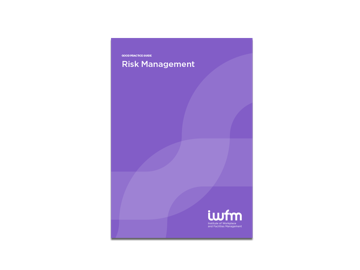
Risk management
This is a practical guide to help you manage risk within your role or organisation.
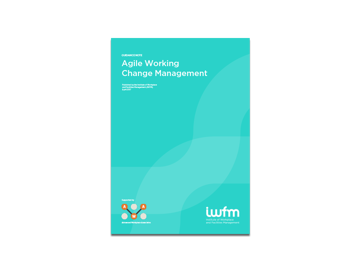
Agile working change management
Agile working describes a range of work arrangements that allow people and organisatio...
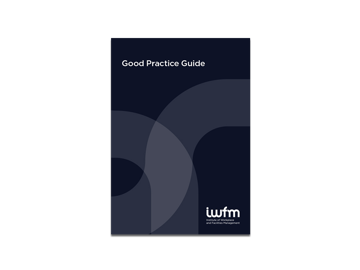
Business continuity
This guide explains the general principles and the practical application of Business C...
Other resources
Choose information sources carefully. Your supply chain and customers will be key sources of information on how the coronavirus pandemic has affected them and what they have done to maintain operations.
For accurate, reliable and up-to-date information official information, the NHS, Health and Safety Executive and the UK Government websites are the obvious main sources. A number of facilities management, property organisations and professional bodies have also published their own guidance as shown below.
Atalian Servest: the FM’s guide to re-opening your workplace
BSRIA: blog on planned preventive maintenance during the pandemic
BSRIA: blog on maintenance of water systems during lower occupancy time
Buro Happold: Equality, Diversity and Inclusion in the ‘next-Normal’
CBI: the latest information, insight and support for businesses
CIPD: managing workplace safety during the pandemic
CIPD: returning to the workplace
Engie: Workspace 2, supporting the creation of the new workspace in a post COVID-19 world
Institute of Directors: factsheet on business resilience
JLL: re-entry, a guide for working in the next normal
Knight Frank: COVID-19 office re-occupancy roadmap
Mitie: getting Britain back to business
Resilience First: guide for businesses when preparing for and recovering from major incidents
7. IWFM news articles
Expand to continue reading

Why professional development is a must for 2022
Although the impacts of COVID-19 are still with us, workplace and facilities managemen...
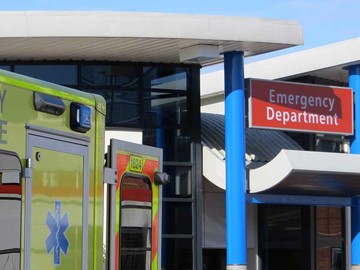
The changing face of FM delivery across the NHS
Hosted by Peter Galley, IWFM Healthcare Working Group Chair
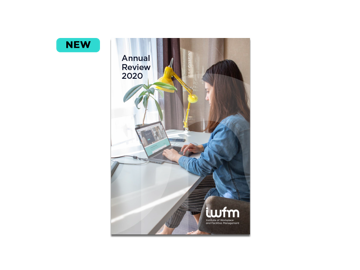
Annual Review 2020: Linda Hausmanis on a year nobody will forget
Last year the world faced an unprecedented crisis which stole lives, closed businesses...
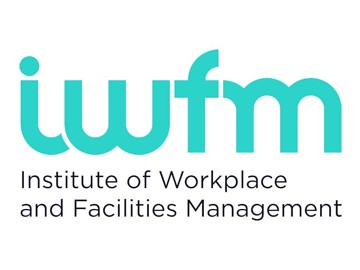
IWFM research on workers’ struggles upon returning to offices gains national coverage
IWFM’s research Returning workers frustrated by office inadequacies received broad nat...
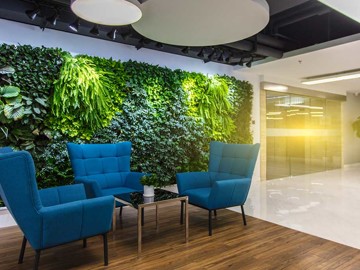
EMCOR UK: Four positive changes that FM can take to help avoid climate catastrophe
As we count down to our Conference, Insight Partner EMCOR explores the first of our me...
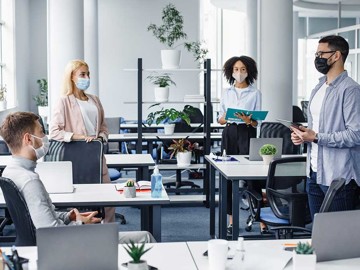
IWFM research finds returning workers frustrated by office inadequacies
The majority of those who worked from home during the pandemic have now experienced at...
Acknowledgements
With thanks to the IWFM Risk and Business Continuity Management SIG, Avison Young, the National Fire Chiefs Council, Robert Greenfield, Chair of the IWFM Health and Safety SIG, and IoT Security Foundation for their contributions to this web page.
All the information on this page was correct as of 22 February 2022.
